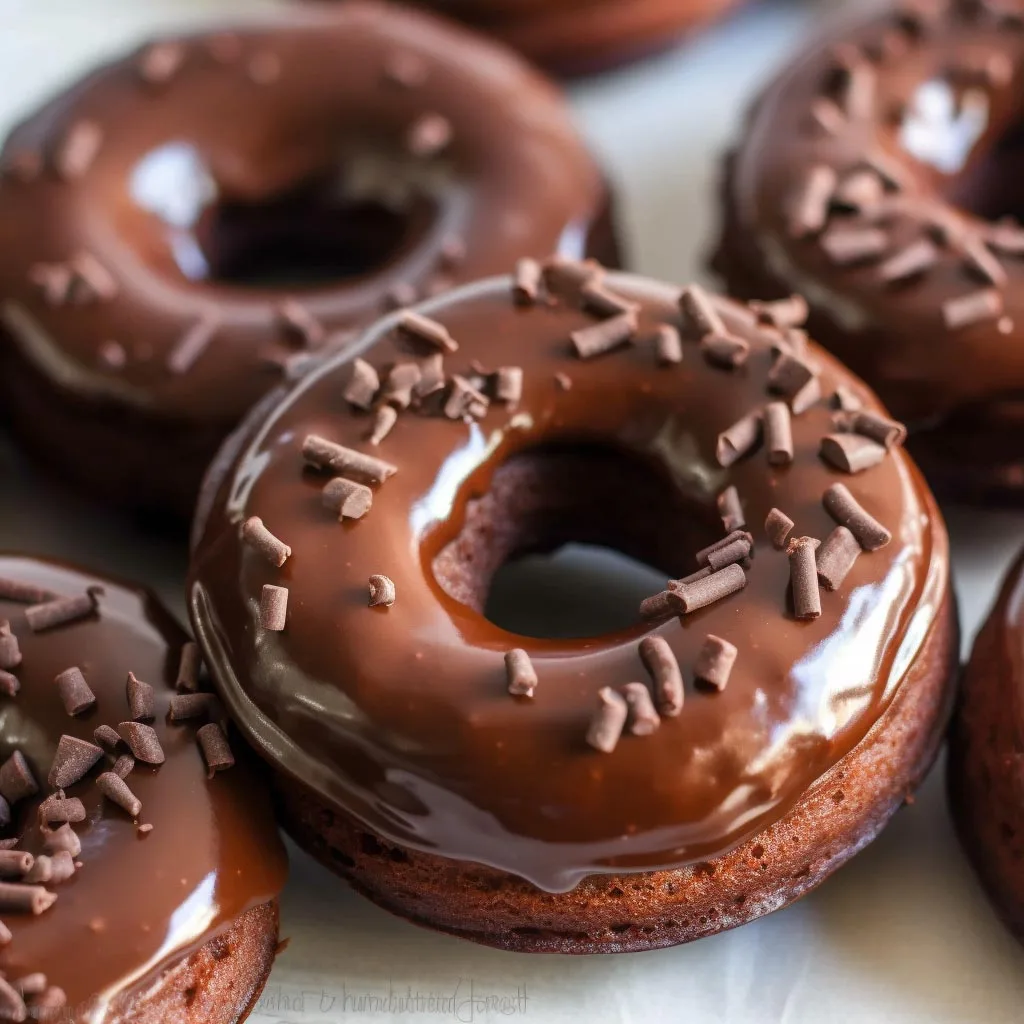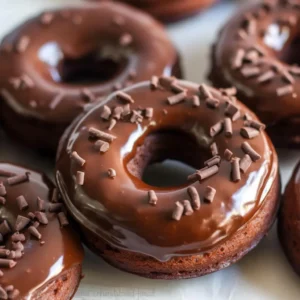
Who can resist the allure of freshly made chocolate doughnuts? This delightful treat brings together the irresistible flavors of cocoa and sweetness, wrapped in a fluffy, golden exterior.
While doughnuts are often associated with morning indulgences or afternoon delights, these chocolate-infused wonders are a timeless classic suitable for any occasion.
Originating from humble beginnings, doughnuts have evolved into a beloved staple of bakeries worldwide. From the bustling streets of New York City to quaint cafes in Paris, the allure of a freshly fried doughnut transcends borders and cultures. And when chocolate enters the equation, the temptation only grows stronger.
Despite their decadent reputation, crafting homemade chocolate doughnuts is surprisingly approachable, even for novice bakers. With a handful of pantry staples and a bit of patience, you can create a batch of these delectable treats to share with loved ones or savor all to yourself.
Expert Tip: For a smoother glaze, melt the chocolate and cream over a double boiler or in short bursts in the microwave, stirring frequently until smooth and glossy.
Plain Flour: Flour serves as the foundation of the dough, providing structure and texture to our chocolate doughnuts. It helps achieve that perfect balance between light and airy while ensuring a satisfying bite with every mouthful.
Cocoa Powder: The star of the show, cocoa powder infuses our doughnuts with rich, chocolatey flavor. Its deep, indulgent notes elevate the taste profile, transforming ordinary doughnuts into a decadent delight that chocolate lovers will adore.
Baking Powder: Baking powder acts as a leavening agent, helping our doughnuts rise to fluffy perfection. It creates those coveted air pockets within the dough, resulting in a light and airy texture that melts in your mouth.
Baking Soda: Working in tandem with baking powder, baking soda contributes to the dough’s rise, ensuring a soft and tender crumb. Its alkaline properties react with acidic ingredients, helping to neutralize any tanginess and achieve a balanced flavor profile.
Salt: Often overlooked but essential, salt enhances the overall taste of our chocolate doughnuts. It acts as a flavor enhancer, bringing out the richness of the cocoa and balancing the sweetness of the sugar.
Caster Sugar: Caster sugar adds sweetness to the doughnuts, creating a perfect harmony of flavors. Its fine texture ensures smooth incorporation into the batter, resulting in a uniformly sweet and delectable treat.
Eggs: Eggs bind the ingredients together, providing structure and stability to our doughnut batter. They also contribute to the dough’s richness, resulting in a moist and tender crumb that’s simply irresistible.
Milk: Milk adds moisture to the dough, ensuring our chocolate doughnuts are soft and tender. It also contributes to the dough’s richness, imparting a subtle creaminess that complements the cocoa perfectly.
Vanilla Extract: Vanilla extract enhances the flavor profile of our doughnuts, adding depth and complexity to the chocolatey goodness. Its warm, aromatic notes elevate the taste experience, making each bite a moment of pure indulgence.
Unsalted Butter: Butter adds richness and flavor to our doughnuts, resulting in a luscious, melt-in-your-mouth texture. Its creamy goodness infuses every bite with irresistible decadence, ensuring a truly memorable indulgence.
Vegetable Oil: Vegetable oil is used for frying the doughnuts, providing the perfect crispy exterior while keeping the interior light and fluffy. Its high smoke point makes it ideal for deep frying, ensuring our doughnuts achieve a golden brown perfection.
Dark Chocolate: Dark chocolate is the key ingredient for our decadent glaze, providing a luxurious, indulgent coating for our chocolate doughnuts. Its intense cocoa flavor adds depth and sophistication, elevating the overall taste experience to new heights.
Double Cream: Double cream lends a creamy richness to our chocolate glaze, creating a smooth and velvety texture that coats each doughnut in pure decadence. Its luxurious mouthfeel enhances the indulgent nature of our sweet treat, making it utterly irresistible.
Sprinkles: Sprinkles add a playful touch to our chocolate doughnuts, providing a burst of color and whimsy to each bite. Whether you opt for classic rainbow sprinkles or shimmering metallics, they’re sure to delight both young and old alike.
Expert Tip: Do not overcrowd the pan when frying the doughnuts to allow them to cook evenly and prevent sticking together.
Expert Tip: Ensure your oil is heated to the correct temperature before frying the doughnuts to achieve that perfect golden brown exterior.
Chocolate doughnuts are best enjoyed fresh on the day they are made. However, you can store any leftovers in an airtight container at room temperature for up to 2 days.
Yes, you can freeze chocolate doughnuts for longer storage. Once cooled completely, place them in a freezer-safe container or zip-top bag, ensuring they are well-sealed to prevent freezer burn. They can be frozen for up to 1 month.
While dark chocolate is recommended for its intense cocoa flavor, you can certainly use milk chocolate if you prefer a sweeter taste. Simply adjust the amount of sugar in the glaze to suit your preference.
While these doughnuts are traditionally fried for that classic texture and flavor, you can certainly bake them if you prefer a healthier option. Simply preheat your oven to 180°C (350°F) and bake for 10-12 minutes or until cooked through.
Absolutely! The sprinkles are optional and can be omitted if desired. Feel free to customize your chocolate doughnuts with your favorite toppings or enjoy them plain for a simpler treat.
Here are some more recipes for you to enjoy! If you my recipes don’t forget to rate and leave a comment.
If you have any recipe suggestions, please do not hesitate to ask me. A great way to stay in contact with me is through Instagram, Facebook, Twitter and YouTube. Don’t forget to tag me @CookwithNabeela in your recipe photos!

Subscribe now to receive my latest recipes directly in your inbox. Stay up-to-date and never miss out!

I love to cook! I want to share with you my favourite, delicious family-friendly recipes. I want to inspire you to create fantastic food for your family every day.
Add your first comment to this post